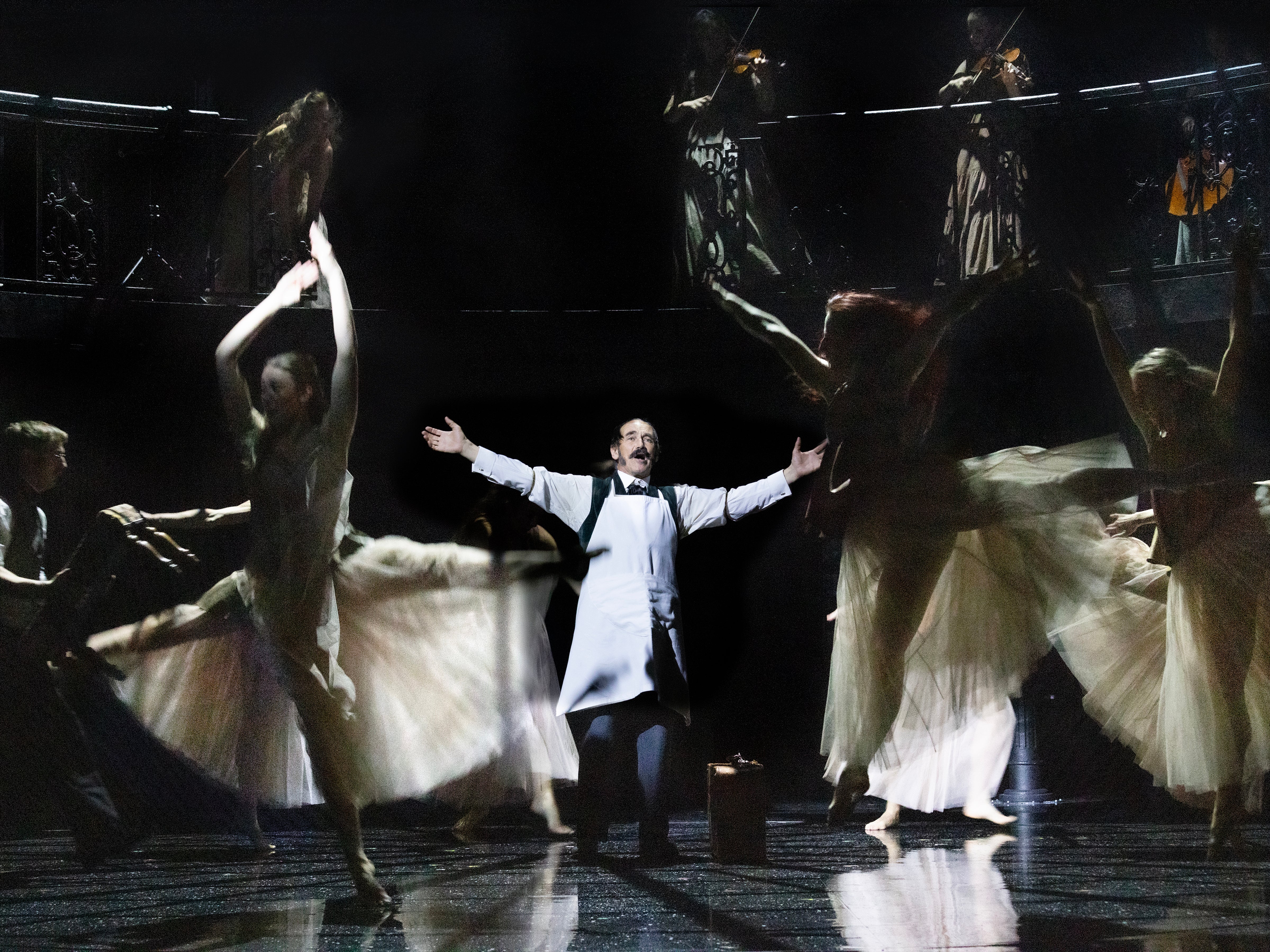The last three years have been so dominated by squirts of soap and sanitising gel that it’s almost impossible to get into a pre-germ mindset. Although conceived by Mark Rylance before the pandemic, there could hardly be a better time to make a play about Ignaz Semmelweis, the Hungarian doctor who discovered that making his colleagues wash their hands reduced the mortality rate in his maternity ward.
Semmelweis’s ideas were largely dismissed in an unenlightened medical world that still clung to miasmas and humours. Here, with the help of a crack theatrical team including War Horse director Tom Morris and writer Stephen Brown, Rylance seeks to give the doctor his due, while also kicking up questions of the established vs the experimental, radicals vs the status quo.
The production is fittingly baroque for a show set in 19th-century Vienna: from the beginning, as we settle into Semmelweis’s head and relive his memories, there’s an awful lot going on. As well as the cast, a troupe of ballet dancers – representing ghosts of the dead mothers Semmelweis failed to save – haunt the stage. Meanwhile, a string quartet wanders around playing snatches of Schubert’s pummelling Death and the Maiden, as well as new compositions by Adrian Sutton.
Sometimes Morris pulls all those elements together gloriously, especially in the moments where Semmelweis loses himself in the past and is suddenly tugged back to the present, while everything – dancers, musicians, ensemble – melts away imperceptibly.
It looks spectacular, too: dancers in dirty costumes, silent and wan, keep a hushed presence on Ti Green’s beautiful set, which is capped by a huge circular spiderweb window. It hangs over the stage and allows Richard Howell’s light – sometimes porcelain pale, sometimes dark and jaundiced – to flicker through in lovely patterns. The Salome Quartet’s string music swells and prickles, and sounds absolutely beautiful.
But there are strangely dull scenes, too, where an actor just gives… a not-very-interesting speech. That’s when you notice the thinness of the story, and you start to wonder why watching all these very talented people doing a lot of very clever things feels so unconvincing.
Front and centre is Rylance. Although he keeps us riveted with an unexpectedly quiet line, or his bewildered, innocent eyes gleaming as Semmelweis makes his discoveries, his performance is stylistically very different from what the rest of the cast are doing.

Where they deliver lines straight and true, beginning to end, Rylance allows himself to murmur and stumble and stutter, as if he’s making it up as he goes along. Sometimes he plays Semmelweis’s aloofness comically; sometimes it’s all asperity. There are aborted lines that seem like they could be fluffs – but then again, maybe Rylance is asking us to see Semmelweis as a bad communicator, someone who discovered this fundamental thing but failed to persuade the medical community about its importance.
Really it’s just too mannered, another display of technical brilliance in a production full of them: the ballet troupe, the string quartet, the beautiful design. And yet everything about the production seems designed to make you feel like you’ve had an exhilarating night at the theatre, while not wholly delivering it. It’s the trappings without the substance; many hands, making effortful work.
Harold Pinter Theatre, until 7 October




Join our commenting forum
Join thought-provoking conversations, follow other Independent readers and see their replies
Comments